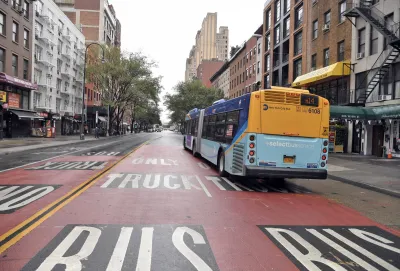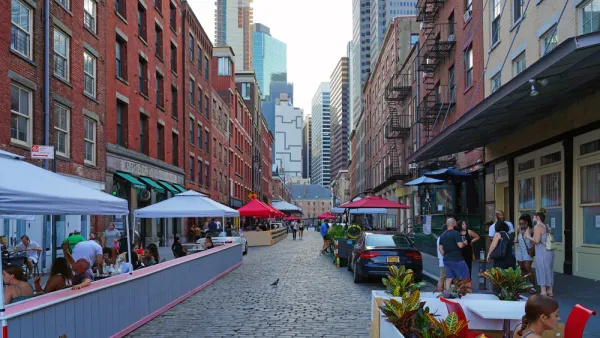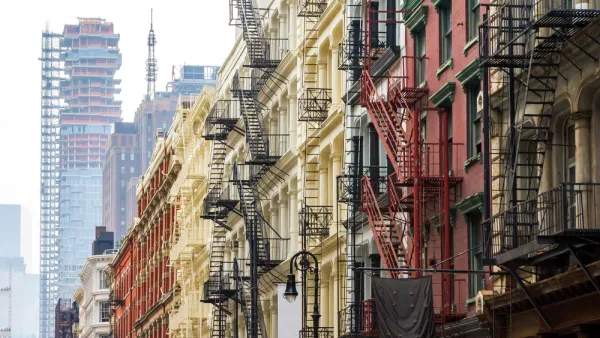The former mayor's administration oversaw several major changes in the city's skyline, streets, and public spaces.

An article by Rachel Holliday Smith describes the changes that have happened to New York City's built environment and skyline during former Mayor Bill de Blasio's administration, which include rezoning, bus lanes, and more supertall buildings.
Some of the changes that impacted the city the most, writes Holliday Smith, are the adoption of outdoor dining and living spaces during the pandemic, programs which the city wants to make permanent. The city also invested heavily in the renovation of city parks in underserved communities and expanded bus and bike lanes.
The article also points to the East Side Coastal Resiliency Project which, while controversial, aims to protect a densely populated neighborhood from flooding and rising sea levels. Another major change: the city's shift of a third of its public housing units to private management using the federal Rental Assistance Demonstration program, which is designed to help cities improve conditions in affordable housing units. Meanwhile, the NYCHA hopes to receive at least $35 billion in assistance funds from the Build Back Better plan in order to meet its $40 billion backlog.
In the past eight years, nine neighborhoods have been rezoned to allow for more density, but critics point out that early efforts focused primarily on low-income neighborhoods, while the results of these rezoning efforts will take years to manifest.
FULL STORY: Skylines and Streetscapes: How New York City Physically Changed in de Blasio Era

National Parks Layoffs Will Cause Communities to Lose Billions
Thousands of essential park workers were laid off this week, just before the busy spring break season.

Retro-silient?: America’s First “Eco-burb,” The Woodlands Turns 50
A master-planned community north of Houston offers lessons on green infrastructure and resilient design, but falls short of its founder’s lofty affordability and walkability goals.

Delivering for America Plan Will Downgrade Mail Service in at Least 49.5 Percent of Zip Codes
Republican and Democrat lawmakers criticize the plan for its disproportionate negative impact on rural communities.

Test News Post 1
This is a summary

Test News Headline 46
Test for the image on the front page.

Balancing Bombs and Butterflies: How the National Guard Protects a Rare Species
The National Guard at Fort Indiantown Gap uses GIS technology and land management strategies to balance military training with conservation efforts, ensuring the survival of the rare eastern regal fritillary butterfly.
Urban Design for Planners 1: Software Tools
This six-course series explores essential urban design concepts using open source software and equips planners with the tools they need to participate fully in the urban design process.
Planning for Universal Design
Learn the tools for implementing Universal Design in planning regulations.
EMC Planning Group, Inc.
Planetizen
Planetizen
Mpact (formerly Rail~Volution)
Great Falls Development Authority, Inc.
HUDs Office of Policy Development and Research
NYU Wagner Graduate School of Public Service




























